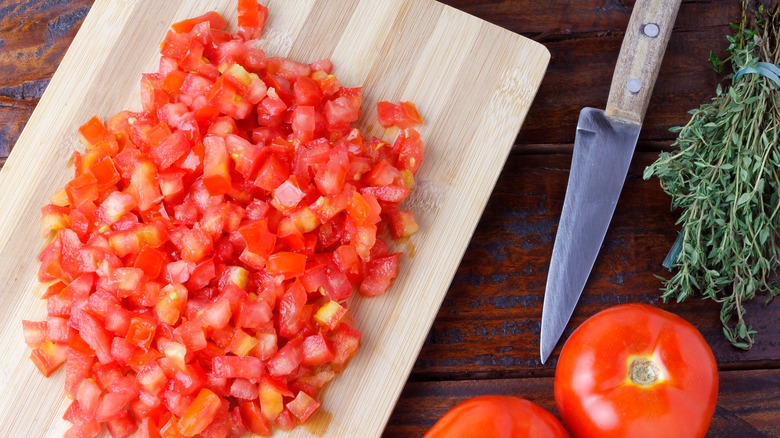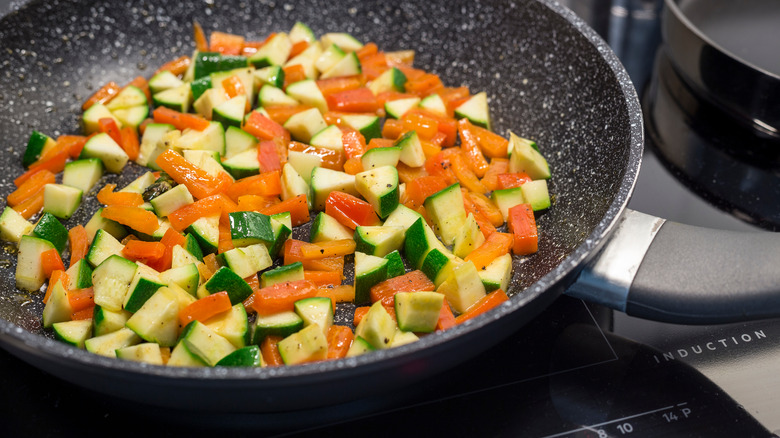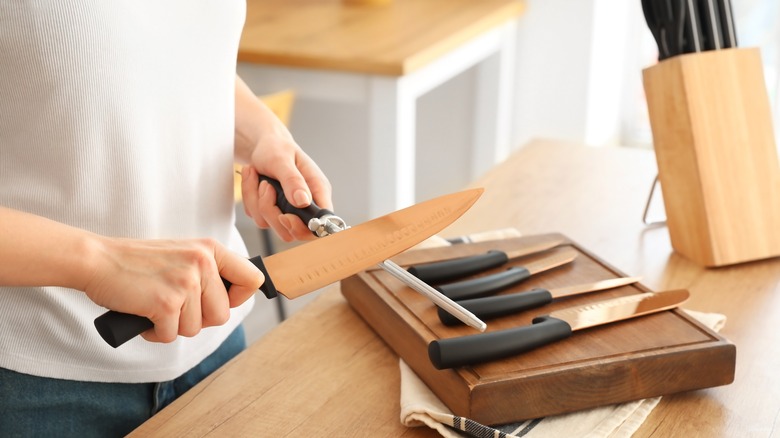The Difference Between Dicing And Cubing In Recipes
Flipping through any cookbook, it's common to see a wide range of terminology used when it comes to preparing vegetables. Even a single recipe may have steps like "dice tomatoes" and "cube eggplant." The instinct might be to lump all of these words under the superordinate category of "cut," leading you to believe you can simply pull out a knife and cutting board, and just go to town on those veggies. However, each word has a very specific meaning and is used with a separate purpose.
Both dicing and cubing refer to the shape of the end result. Dicing is cutting food into small pieces that range anywhere from 1/4-inch to 1/2-inch in size. The end result is a pile of nearly identical, dice-shaped pieces that work well in stir-fry, stew, soup, or casserole. The tomatoes in a fresh summer pico de gallo salsa are a prime example of diced vegetables.
When it comes to cubing, it may seem like there's no difference; dice are cubes, after all. But, cubing is cutting vegetables into cubes that are 1/2-inch to 1/3-inch in size and is often used for things like roasted potatoes, meats, or big vegetable medleys. The process of cubing is usually a little more precise than dicing, since the shapes of the food are going to be more noticeable because of their size.
Different cuts of veggies affect taste and cooking time
The small distinctions between dicing and cubing can result in some significant differences in the final dish. For example, mirepoix — a mixture of onion, celery, and carrot — is a common base for stock and soups like a Tuscan white bean soup. Cutting up these ingredients with no regard to their size ruins the point of using them in the first place. As the vegetables cook, they release their inherent flavors, but if the carrots are bigger than the onions, for example, they aren't going to cook at the same time, making a mirepoix that is lacking in what the carrots have to offer. Careful dicing of these vegetables will ensure a mix deserving of any French restaurant.
Sticking with the mirepoix example, even choosing to dice over cube is important. A traditional mirepoix strains the vegetables and herbs out of the remaining broth. If this is the case, larger cubed pieces can be used. However, if the recipe states the mirepoix is to remain as a base of the soup, cubed pieces will be far too big and won't make for a particularly appealing-looking dish, especially when the vegetables aren't the main focus.
A sharp knife is necessary either way
Whether finely dicing your veggies or opting for larger cubing, it's always important to have a sharp knife to get the desired results. Dull knives lack precision because they require the user to press harder and offer less control. This can result in unideal veggie shapes at best, or, at worst, the knife slipping and a quick trip to urgent care if you're not careful.
When it comes to dicing, your knife should make smooth, even cuts similar to slicing through butter. If the knife can't be cleanly pulled through a tomato, it's an indication it's not sharp enough. Also, anyone who's tried dicing a tomato with a dull knife knows that applying even a little bit of pressure will cause its insides to squirt all over the cutting board, creating more of a mushed tomato instead of the beautiful diced pieces.
For cubing heartier fruits and vegetables like potatoes, butternut squash, or jicama, a properly sharp knife will create extremely accurate, visually appealing pieces that are worthy of a professional kitchen. Cutting hard vegetables like these is difficult enough and a dull blade will make it even harder; rather, the best tools will yield desired results and can save time and prevent sore wrists.



